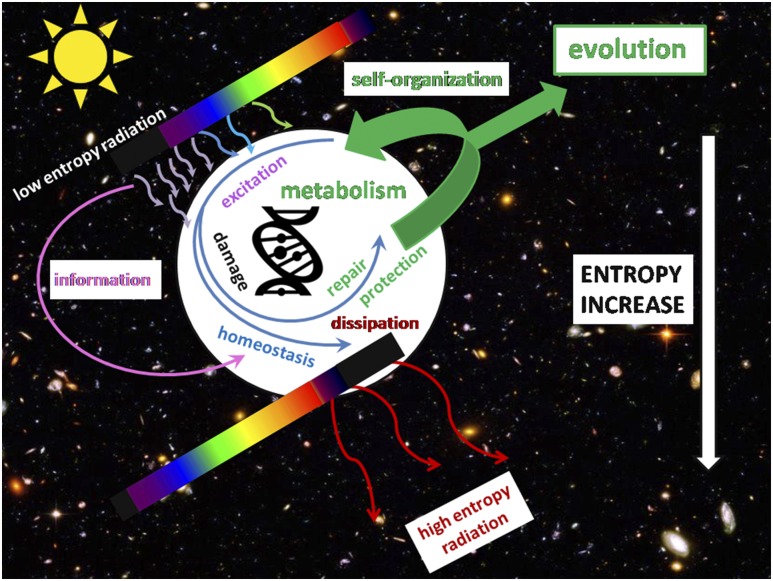Figure 1.
UV radiation as an initiator and driver of biological evolution. According to the second thermodynamic law, any self-organization must be driven by an irreversible process of energy flow in the form of low-entropy radiation from a container of high temperature (the Sun), and dissipate it in the form of high-entropy radiation in a container of low temperature (the space). UV radiation is enough to drive chemical reactions independently on metabolism and to damage the cell. DNA effectively dissipates the energy of excitation (19) and can store genetic information including only a limited number of UV-induced mutations. The cell also gets information on UV to set off the processes of repair and photoprotection, thus maintaining homeostasis, preserving enthalpy, and facilitating evolution. (The background: Hubble Deep Field; NASA, https://www.nasa.gov/. The DNA icon: PngTree, https://pngtree.com/free-icons.)

